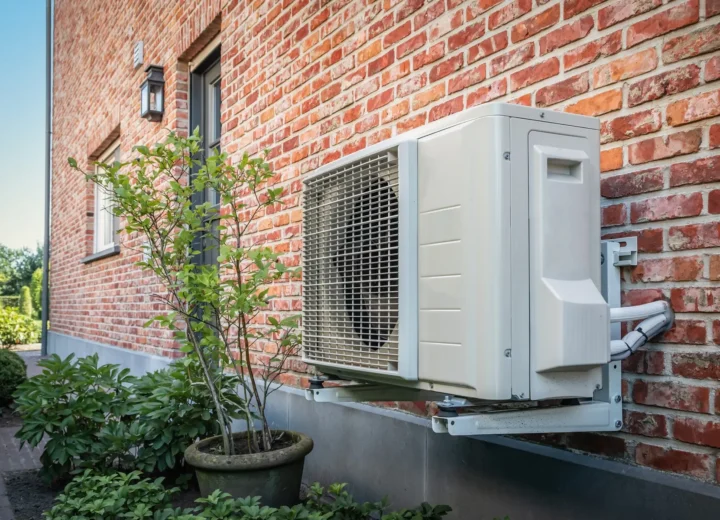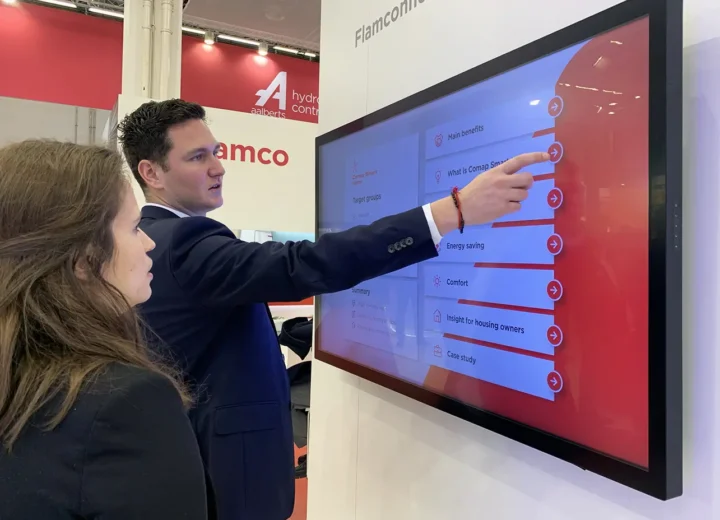Reducing energy consumption is an impending necessity, with up to 70% of household energy bills attributed to heating and cooling. A total of 30% of European energy consumption is also attributable to temperature control in buildings, whether heating or air conditioning. To reduce consumption and meet new and ongoing European standards, there is an easy way to save energy: monitor consumption using connectivity. Aalberts hydronic flow control knows how!
Reduce energy consumption: curb consumption with connectivity
Saving energy is easy when using connectivity to compare and monitor energy consumption. Connectivity ensures proactive management of energy use, low instalment costs, easy recoup and impressive bill savings.
For example, Denmark saw a 38% rise in energy savings with room-by-room regulation. Italy saw a 12% increase in energy savings using automatic hydraulic balancing. And Romania achieved a 40% savings rate on energy bills, thanks to balancing and independent control. Monitor, regulate and save: it’s as easy as that.
Better building management
Energy savings
In line with European standards, eu.bac Certification will evaluate the performance of control systems, including thermostats, regulators, pilot valves and hydraulic valves..
All Comap thermostats are eu.bac certified, which allows up to 15% energy savings. Installing a Secos Manifold optimises flow rates and regulates temperature permanently without calculation, working in a circulatory loop. To improve building management, BMS connection sensors provide data that can ensure up to 50% energy savings.
Improving the comfort of living
Occupants of any building or home need a comfortable living temperature, whether for heating or air-conditioning purposes. Connectivity allows management of the thermal environment in real time, as well as remotely, to improve the occupants’ comfort.
For example, floor heating installed in a child’s room or nursery is ideal for safety and energy savings. The temperature can be regulated to a consistent and comfortable setting, and no radiators means no risk of accidents or burns.
| Zooming in on Intelligent thermostats |
|
Recommendations per building
Multi-site buildings
Connectivity needs to be adapted to suit every type of building. Simple yet centralised management (e.g. smartphone thermostat), vs larger BMS and global view in residential projects is recommended. This includes small multi-site tertiary buildings, which could comprise a chain of day care centres or restaurants.
Centralised management allows a comparison of how one site works in relation to the other in order to optimise performance. Each site can actually become a benchmark from one surface to another.
Large buildings
The larger the building, the more centralised its global management will be. For example, power meters and extensions are connected to smartphones for alerts and customised management.
This is recommended for buildings with high ceilings, such as school entrances, building halls, industrial buildings, stations and all other types of open buildings. The larger, more spacious and higher the building is, the more our intelligent thermostats are recommended.
Connectivity enables the monitoring of energy efficiency in buildings, which is necessary to meet European requirements, but it also improves overall management and costs. Meeting European standards and regulations is also more manageable, with temperature regulation matched to suit any building.
Aalberts hydronic flow control experts recommend using connectivity to improve building management and uphold ever-evolving changes in the industry.





